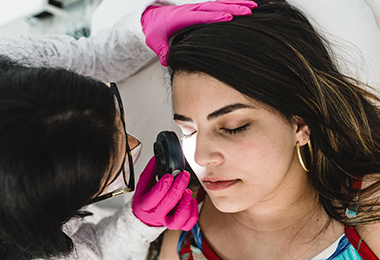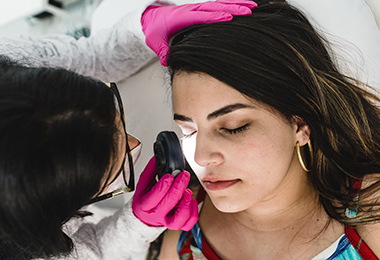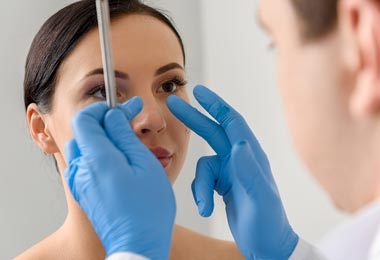Oral Cancer and Tobacco
Reviewed By:
What is the link between tobacco and oral cancer?
Tobacco use is known as a major risk factor for oral and many other cancers. All tobacco products, including cigarettes, cigars, pipe tobacco, chewing tobacco, and snuff, contain the following:
-
Poisonous substances (toxins)
-
Cancer-causing agents (carcinogens)
-
Nicotine, an addictive substance
Each tobacco product is linked to an increased risk for specific cancers:
Cigarettes
Cigarettes, the most common form of tobacco used, causes about 90% of all lung cancers, according to the American Lung Association. Smokers are also at a 10 times higher risk for oral cancer compared to non-smokers. Smoking is linked to increased risk for more than 12 other types of cancer, too. In addition, cigarette smoking is linked to nearly 1 in 5 deaths in the U.S. Cigarettes contain more than 60 known cancer-causing agents.
Cigars and pipes
Cigars and pipes are often believed to be a less harmful way to smoke tobacco. However, even when not inhaling, cigar and pipe smokers are at increased risk for cancer of the oral cavity, esophagus, voice box, and lungs. Pipe smokers also are at increased risk for lip cancers in areas where the pipestem rests. In addition, cigars take longer to burn and contain more tobacco than cigarettes, increasing the amount of secondhand smoke exposure.
Chewing tobacco and snuff
Spit tobacco, also known as chewing tobacco and snuff, are forms of tobacco that are put between the cheek and gum. Chewing tobacco can be in the form of leaf tobacco (which is packaged in pouches), or plug tobacco (which are packaged in "brick" form). Snuff is a powdered form of tobacco, usually sold in cans. The nicotine is released from the tobacco as the user "chews."
Although chewing tobacco and snuff are considered smokeless tobacco products, harmful chemicals including nicotine are ingested. More than 28 cancer-causing chemicals have been found in smokeless tobacco.
Chewing tobacco and snuff can cause cancer in the cheek, gums, and lips. Just as with a pipe, cancer often occurs where the tobacco is held in the mouth. Cancer caused by smokeless tobacco often begins as leukoplakia, with a whitish patch that develops inside the mouth or throat. Or the cancer may erythroplakia. With this condition, a red, raised patch develops inside the mouth. It's also linked to esophageal and pancreatic cancers.
How do cigarettes and cigars compare?
Cigars became a trend in the 1990s, attracting the young and the old. Many people think cigars are less harmful to their health. But cigars actually pose the same risk for oral cancer as cigarettes do. Many cigar smokers don't inhale. But their risk for oral, throat, and esophageal cancers is the same as for cigarette smokers. Consider these facts:
-
Compared with nonsmokers, regular cigar smokers are 4 to 10 times more likely to die from oral cancer, esophageal cancer, and laryngeal cancer.
-
Cigar smokers may spend an hour or more smoking 1 large cigar that can contain the same amount of nicotine as a full pack of cigarettes. And even unlit cigars, when held in the mouth for an extended period of time, promote nicotine absorption.
-
Secondhand smoke from cigars contain toxins and cancer-causing agents (carcinogens) similar to secondhand cigarette smoke, but in higher concentrations.
How can I stop using tobacco products?
The American Cancer Society and the American Lung Association offer the following tips if you are trying to quit using tobacco products:
-
Think about why you want to quit.
-
Pick a stress-free time to quit.
-
Ask for support and encouragement from family, friends, and coworkers.
-
Start doing some exercise or activity each day to relieve stress and improve your health.
-
Get plenty of rest and eat a well-balanced diet.
-
Join a stop-smoking program, or other support group.
-
Talk with your healthcare provider doctor about medicines that may help you quit.
Johns Hopkins Head and Neck Cancer Surgery

Our team offers comprehensive treatments for cancers affecting the nasal passages, sinuses, the throat and nearby areas. Our head and neck surgeons work closely with medical and radiation oncologists, endocrinologists and other specialists to provide well-rounded care.






